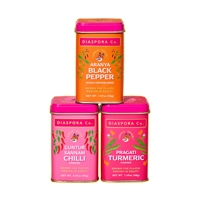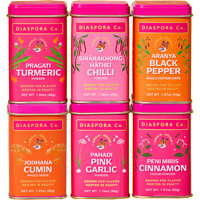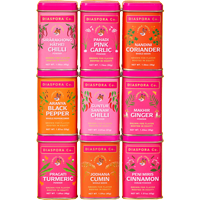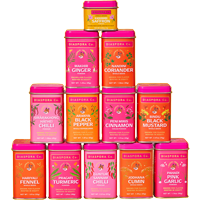A few years ago, I attended an Assamese cuisine pop-up hosted by home chef Gitika Saikia. All the dishes were laid out on the table with tags bearing their names. Amidst platters of fish tenga (sour fish curry), pork preparations and dishes made of fiddlehead ferns, there was also a small jar of pickle without a tag. I served myself a generous portion of the pickle and put a large chunk into my mouth, along with the rice it was hiding under. For a few seconds after, my brain went completely blank; all I could feel was my mouth burning and my eyes streaming, until Saikia offered me a glass of her homemade rice beer to cool off.
This was my first introduction to bhut jolokia (also known as Sivathei by the Tangkhul tribe – an ethnic group in the Indo-Myanmar border area in the northeastern Indian state of Manipur), one of the hottest chillies in the world, occupying the second place on the Scoville scale (a scale that measures the potency of chillies based on the concentration of capsaicinoids). Also known as the ghost pepper, this chilli is grown in the northeastern states of India and is famous for its distinct aroma and fiery taste.
“Chillies are consumed heavily in the tribal regions of lower Assam, added to their chutneys, dried fish and fermented foods,” said food writer and culinary researcher Pushpanjalee Das Dutta. Although it has become a darling of the culinary world in recent years, bhut jolokia has always had a revered place in the food systems of the many tribes of the north east. “The heat quotient of the food differs from tribe to tribe. The food of Bodo and Mising tribes is spicier than [that of] others,” Dutta adds.
Bhut jolokia is one of the many varieties of chillies grown in India’s northeast. Other chilli varieties include the fruity dalle khursani of Sikkim, Nagaland’s fiery king or Naga chilli, the kon jolokia (also known as sour bomb) from Assam, and the Sirarakhong (also known as Hathei) chilli from Manipur. The latteri even has an annual festival called Sirarakhong Hathei Phanit dedicated to it.
While the bhut jolokia is on one end of the heat spectrum, Kashmiri chillies are close to the other end. Grown in the far northern reaches of India, in the mountains of Jammu and Kashmir and Himachal Pradesh, these chillies are mild (measuring 2000 Scoville Heat Units or SHUs compared to the bhut jolokia’s 1,041,427 SHUs), but they add a deep carmine colour and depth of flavour to a dish. On the other hand, given that Kashmiri chillies are relatively hard to source, Kashmiri chilli powder is usually made from powdered Byadgi chilli, a fragrant variety cultivated in South India.
From pepper to chillies
From the cold mountain ranges of the Himalayas to the hot and humid southern parts of the country, chillies — fresh, dried, green, red, whole, stuffed or powdered — form an essential part of the spice cupboard in Indian homes. They are so deeply embedded in the Indian culinary lexicon that it’s hard to imagine a universe without them. And yet, chillies came to India only about 450 years ago as part of the Columbian Exchange (a movement of ideas, food crops, technology, human populations and disease between the New World and Old World), following Christopher Columbus’s colonizing mission voyage to America in 1492. It is believed that Columbus was aiming to reach India when he set sail, with the hope of finding a cheaper source of pepper.
Long before chillies arrived on Indian shores, people in the Indian subcontinent were using the fruits of a different plant group – Piperaceae or the pepper family — to add heat to their food. Black pepper or gol mirch (Piper nigrum), fruit of a climbing vine, was native to the Malabar region, while pipli or long pepper (Piper longum) grew wild in Eastern Bengal and Odisha. Both these peppers find mention in Ayurvedic texts and were prescribed for medicinal and dietary purposes. As opposed to the sharp, fruity taste of chillies, these peppers have a woody, almost pine-like flavour with a unique piquancy that hits the throat.
Pepper was an important part of the trade between India and Roman Egypt in the 14th century. Food historian Lizzie Collingham writes that upon reaching the Caribbean, Columbus was so convinced that he had reached his intended destination that he named the spicy ingredient that the locals ate ‘pepper of the Indies’. It was, in fact, aji, one of the many varieties of capsicum that were cultivated and eaten by the Meso-Americans. Even though the capsicum plants of America are not related to the pepper plants of Asia, the suffix ‘pepper’ came to be permanently attached to chillies. According to Collingham: “The word chilli itself comes from Mexico where, some years later, the Spaniards came across a wide variety of cultivars of the Capsicum annuum which the Aztecs called chilli.”
From the cold mountain ranges of the Himalayas to the hot and humid southern parts of the country, chillies — fresh, dried, green, red, whole, stuffed or powdered — form an essential part of the spice cupboard in Indian homes.
In 1498, a few years after Columbus’ expedition, the Portuguese explorer Vasco Da Gama arrived in Calicut on India’s Malabar Coast. He succeeded where Columbus had failed. Despite a lukewarm welcome from the king of Calicut, Vasco Da Gama departed with ships laden with black pepper, which the Portuguese sold at a handsome profit.
Six years later, the Portuguese Overseas Empire was founded to serve as the governing body of the Portuguese colonies and territories. By 1530, they had established Goa as their capital. The Portuguese monopolised the spice trade; in the 16th century, more than half of their revenue was generated from black pepper and West African gold, with the former outweighing the latter in terms of proportions. The Portuguese occupation of Indian territories was the precursor to nearly a century of British colonial rule. The colonial era had a profound and traumatic impact on the country.
It is widely believed that chillies may have come to South Asia with Vasco de Gama. Collingham writes, “It is not known exactly when chillies arrived on the Malabar Coast, but thirty years after Vasco de Gama first set foot on Indian soil, there were at least three different types of chilli plants growing around Goa.” In Goa, chillies were called Pernambuco pepper, likely named after the region in Brazil via Lisbon that they had arrived from. In Bombay, they were named Gowai mirchi or Goan pepper, which suggests that Goa was their point of entry into India..

Portugese map of Calicut 1572; From Georg Braun and Franz Hogenbergs atlas Civitates orbis terrarum.
The Deccan region took to chillies with gusto. The arid climate was conducive to both the production and consumption of chillies. They were also cheaper to grow and store as compared to pepper. In Indian Food Tradition: A Historical Companion, the renowned Indian food scholar K.T. Achaya writes about the South Indian poet and philosopher, Purandara Dasa, who wrote a verse on chillies. In the song vah vahre menasina kayi, he wrote about eating chillies with rotis made of finger millet and seeing chillies transform from green to red.
Chillies, being reasonably inexpensive, have always been accessible to lower income groups. Often, as is the case in Dalit homes in some Indian states, chillies became the main flavouring agent when spices were not affordable. Wajdi, a dish made with beef or goat stomach and intestine (the parts that typically get thrown away and are not considered edible by the upper castes in India’s stratified caste system), is cooked with just oil, salt and chilli powder. In addition to serving as a flavouring agent, chillies are also a valuable source of Vitamin C for the disadvantaged. poor. Unlike other spices such as black pepper, long pepper, cardamom, etc., whose culinary use was largely restricted to the privileged upper castes, chilies served as an equalizer.
Every chilli has its own character
Today, there are over a hundred commercial varieties of chillies grown across India. Apart from the bhut jolokia and Naga chilli of the north east, Byadgi, Guntur Sannam, Salem gundu, mathaniya, Kashmiri, jwala, and Kanthari chillies are some of the most popular varieties. At present, the southern Indian state of Andhra Pradesh dominates production, contributing more than 50% of the total domestic chilli production, and 60-70% of total exports. Cultivated in Guntur, the largest chilli-producing region in the state, the famously fiery Guntur sannam and teja varieties belong to this part of the country. They add colour as well as heat to Andhra cuisine.
According to author Archana Pidathala, whose cookbook Five Morsels of Love features several traditional Andhra recipes, the cuisine is hot so as to act as an antidote to the searing temperatures in the region. “In Andhra, we use chillies every day in every meal; we typically add it to pappu (a lentil preparation). The podis (or dry spice powders) and chutneys that Andhra Pradesh is famous for also come laden with chillies,” she said. “The common theory [as to] why people in Andhra Pradesh tend to eat a lot of chillies is that the region is so dry and hot that eating chillies will make you sweat and in turn help you cool down.”
While this theory has no scientific basis, it definitely holds some weight, as people in the hottest regions of India are also heavy chilli eaters. While the food of Andhra Pradesh is probably one of the spiciest regional cuisines in India, there is still sound reasoning behind using chillies in a dish. “In gongura pappu (a lentil dish made with sorrel leaves), we add 20 chillies to balance the mouth puckering tanginess of sorrel,” said Pidathala. “If you stretch any one dimension of a dish — [by adding] something too sour or too spicy — you don’t leave it like that. You round it off with other flavours.”
Unlike other spices such as black pepper, long pepper, cardamom, etc., whose culinary use was largely restricted to the privileged upper castes, chilies served as an equalizer.
It is often assumed that adding heat is the primary role of chillies, but they actually have a much more rounded flavour profile. “Every chilli has its own flavour profile. Karnataka’s byadgi, for instance, is a medium spiced chilli with a natural smoky flavour, robustness as well as great color,” said Chef Shriya Shetty, who regularly hosts Mangalorean food pop-ups across India. On the other hand, the jwala, which is the most commonly available green chilli across the country, brings aroma and vegetal sharpness.
“A popular dish called hari mirch ka keema (minced mutton cooked with green chillies) uses light green chillies, which are not too spicy. They add mild heat to the dish along with a lot of flavour,” said Chef Sadaf Hussain, author of Daastan-e-Dastarkhan: Stories and Recipes from Muslim Kitchens. There are also chillies that are used neither for heat nor colour. “The street food shops of old Delhi use a distinct variety of chilli — the yellow chilli. Grown in Himachal Pradesh, it adds a little heat and no colour, [which is] perfect for dishes with a white gravy,” said Hussain.
Chillies instantly assimilated into the south Indian diet once they arrived with the Portuguese. However, it wasn’t till the 18th century that they were introduced to north India. Collingham writes that it was the Marathas — legendary warriors from the Deccan plateau in southwestern India — who brought them along. Marathas, who are credited for the collapse of the Mughal empire in India, attacked Delhi in 1719, bringing with them the spicy gift of the Portuguese. Known for their hot-headedness, the Marathas also consumed copious amounts of chillies. Legend has it that it is this fondness for heat that made the Marathas particularly formidable adversaries. Collingham mentions that this characteristic thus became a symbol of masculinity, still fetishized in the modern day in the form of chilli-eating competitions. The chilli-eating Marathas were deemed stronger than the Mughals, whose diets included delicate pilaus.
A cultural artifact
Chillies are now so deeply embedded in South Asian culture that their uses go far beyond the culinary. The burning of dried red chillies is believed to ward off ‘nazar’ or the evil eye in Hindu homes. In auto rickshaws in Mumbai, it is common to find a string of chillies with a lemon tied to one end hanging from the windshield; this is meant to keep away bad luck. Chillies have also become a part of everyday lingo. ‘Mirchi lagna’ is an idiomatic Hindi phrase used sarcastically as a question (mirchi lagi kya?) towards someone who has been offended: the question literally translates to, did you feel the burn (of chillies)? Bollywood films are equally chilli-crazed, sometimes using chilies as a simile for love (as in the song “Mohabbat Hai Mirchi” from the 2012 film Chura Liya Hai Tumne), and at other times as a metaphor for female sex appeal (the song “Haaye Haaye Mirchi” in the 1999 film Biwi No. 1).
To know and appreciate South Asian cuisines is to become intimately acquainted with chillies in all their myriad varieties. This can be a lifelong — and joyous — journey of discovery. Only one word of caution: When it comes to the bhut jolokia, tread lightly, and always with a bottle of chilled rice beer by your side.











